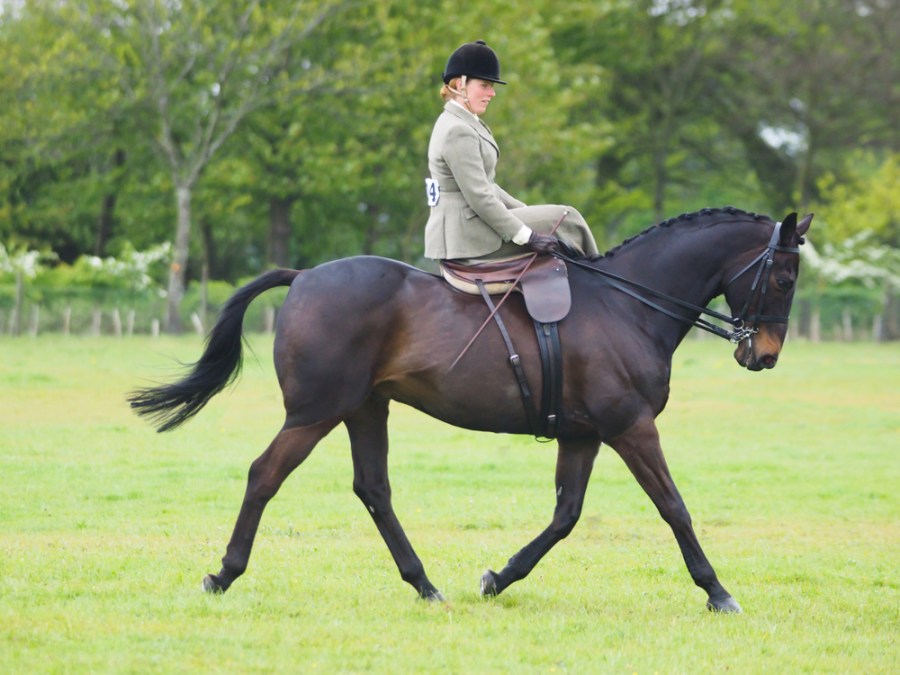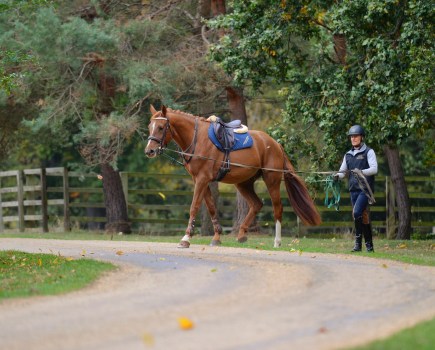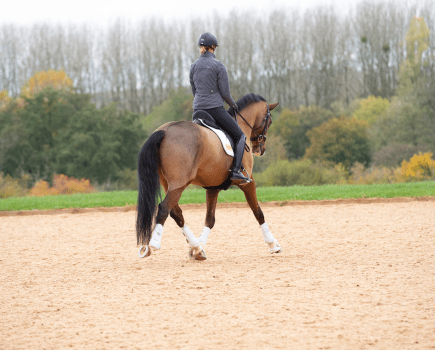Once considered the ‘correct’ way for ladies to ride a horse, now everyone can ride side saddle and there are are an increasing number of events to take part in, should you wish to compete.
While riding side saddle is very different to riding astride — you only have one leg (the left) against your horse’s side for a start — it is a great skill to learn and can have a positive impact on your astride position. It’s good fun too!
The side-saddle
A side saddle has a few main differences to an astride saddle.
- Side saddles have a flatter seat, two pommels and one stirrup.
- The pommel on top is the fixed head (known as the ‘Queen’) and your right leg goes over the top of this one and rests on the horse’s shoulder.
- The second pommel is the leaping head, which is more curved and rests on your left thigh.
- There are three girths: normal, balance and over girth. They counter the weight imbalance and help keep the side saddle in place.
- The stirrup also comes in various styles, with some that detach if the rider is unseated.
Make sure that you have a correctly fitting side saddle for your horse. The wrong fit can impact how you feel and your horse’s way of going.
Rider position
Side-saddle technique is to hook your right leg over the Queen, with the leaping head curving over your left thigh.
Your left leg rests down the horse’s side as it would when you are riding astride and this foot will be in the stirrup.
Both pommels help to keep you safe and secure in the saddle. There are a range of styles and they can usually be adjusted or padded to make them a better fit for the rider.
While you can grip with the Queen, the second pommel is there to provide extra support.
“Even though your legs are to one side, you still sit straight and square in the saddle with your seat bones on either side of the horse’s spine,” explains Robyn Catterall, a fully qualified Side Saddle Association instructor and panel judge.
“Someone watching you from behind shouldn’t be able to tell the difference as you should be sitting tall and central on the horse’s back.”
Robyn also notes that experienced astride riders tend to excel at riding side saddle.
The aids
A crop and spur are used to help replace the lack of the rider’s right leg and make aids clearer for the horse.
You don’t have to use a spur, but it is considered correct turnout for one to be seen when competing in a side saddle class.
A spur band or blunt spurs are also acceptable.
Side-saddle lessons
During your first lesson, you will be taught how to sit correctly in the saddle and taken through the correct aids.
You start in walk and trot, with plenty of transitions and changes of rein so that you can learn to use your seat as an aid,” explains Robyn.
“You will also need to get used to using a stick on the right side, rather than using your right leg aids.
“It can take a couple of sessions to get used to riding in a side saddle as it is obviously quite different from riding astride.”
Suitable horses
According to Robyn, any type of horse can carry a side saddle, regardless of breed or conformation.
The most important factor is to have a horse who is good to school astride, as this makes the transition to side saddle smoother.
“The gaits are also important. You want a horse with a comfortable trot, which is one of the most difficult paces as you will have to sit to it rather than rise,” adds Robyn.
“I like a horse with quite a flat, quiet trot as it makes riding it easier.
“I have, however, competed in side saddle on a wide range of horses, including Thoroughbreds, cobs, Highland ponies and hunt horses, so it really is open to all.”
Training time
The length of time it takes to learn to ride side saddle differs between riders.
“I have been teaching side saddle for six years and I find that the more experienced a rider is at riding astride, the easier they find side saddle to pick up,” says Robyn.
“A few of my pupils have even felt confident enough to go to their first show after a few lessons, so it is possible.
“Having a horse who is already nicely schooled astride also helps because it makes the transition much easier.”
Side-saddle competitions
The most popular side saddle competitions are in the world of showing, such as ladies hunter and ladies side saddle classes, but there are more beyond this.
The Side Saddle Association offers classes, and these are aimed at the riding technique, your partnership with the horse, and turnout — and they don’t take the horse’s conformation into account.
British Dressage has also launched a side saddle championships.
You’ll likely see several riders side saddle out hunting and taking part in hunt rides too.
“Most classes or disciplines are open to side saddle entries; you just need to check with the event organiser before you go,” adds Robyn.
“I have taken part in showing and working hunters, as well as jumping, hunter trials and endurance rides while riding side saddle.”
Correct attire
A traditional riding ‘habit’ — as correct side saddle dress is known — is made up of a jacket, waistcoat and apron (skirt). Breeches are worn underneath and should match the colour of the apron.
Riding boots should be long.
In the show ring, a collar and tie are typically worn with a bowler (with veil) and dark-coloured gloves before noon.
After noon, a silk top hat (with veil) should be worn with light-coloured gloves.
However, many riders prefer a hard riding hat (which is much safer as it fastens under the chin and will protect your head if you fall off), probably with a black velvet hat silk, and these are acceptable at any time of day.
With a silk hat (only to be worn after midday) you wear a cream four-fold stock and white stock shirt.
Jumping
Robyn, who has been riding side saddle for 12 years and was Reserve Side Saddle Rider of the Year at the National Side Saddle Show, adds that jumping in a side saddle is a different skill.
“A lot of people feel that it looks unsafe, but I find jumping side saddle safer and more comfortable as my horse has quite a big, bold jump,” she says.
“The way the saddle is designed with the two pommels offers plenty of stability.
“I have taught riders who are confident enough to try jumping on their third lesson. How quickly you progress depends on your own and your horse’s capabilities.”
Find an instructor
The Side Saddle Association is the best place to start as it has a list of qualified instructors, including those who teach with their own horses so that you can give it a go on a trained horse.
This way you will be able to see if you want to continue to put in time and money before purchasing a saddle and training your own horse.
Main image © Shutterstock








